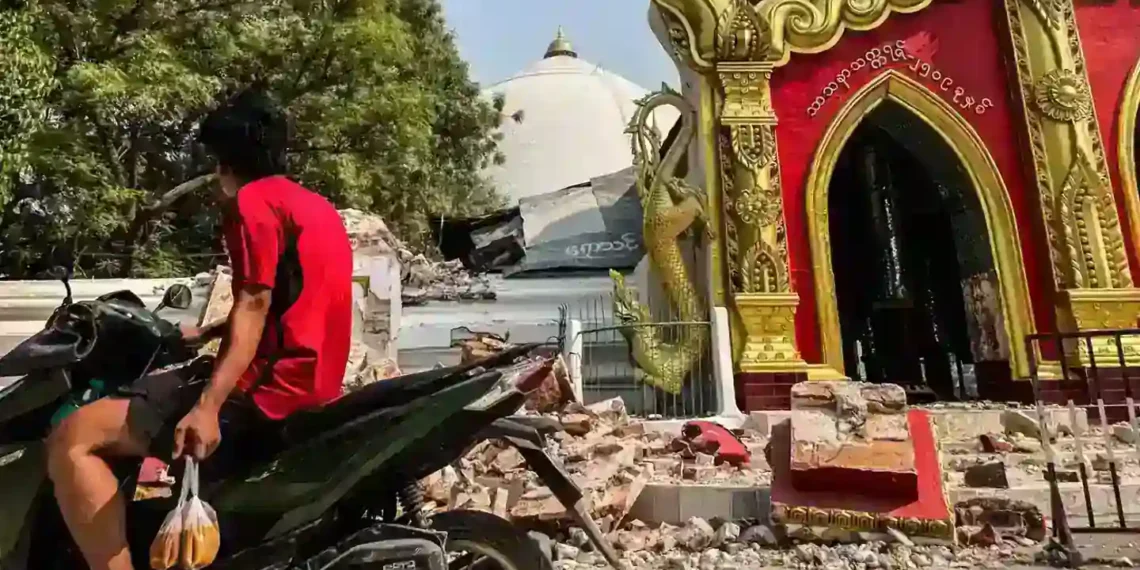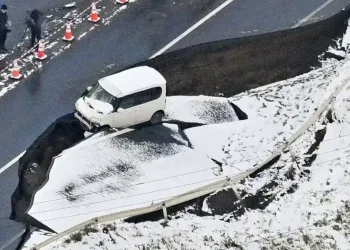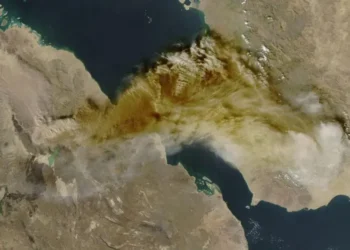“The Smell of Death Still Lingers”: Myanmar’s Earthquake Survivors Grapple with Devastation, Despair — and Abandonment
Sagaing, Myanmar — A week after the most powerful earthquake to hit Myanmar in a century, the air in Sagaing still carries the overwhelming stench of death. Survivors sleep on roadsides, rescue workers dig through rubble with bare hands, and cries for help echo unanswered across towns reduced to ruins.
When the earthquake struck last Friday, Ko Zeyer raced from Mandalay to his hometown of Sagaing — a journey that normally takes just 45 minutes. But with roads destroyed, bridges down, and buildings collapsed, it took him 24 agonizing hours to reach his family.
They were alive. Many others were not.
“The smell of the dead bodies has overwhelmed the town,” said Ko Zeyer, a local social worker. “Almost everyone lives and sleeps on the street. I sleep in a doorway — so I can run if the aftershocks come.”
With more than 3,145 confirmed dead, the true toll remains unknown. Many victims are still buried under the debris. The heat swelters at 100°F (37°C), and survivors wait in long queues for food, water, and shelter — swatting away mosquitoes and sleeping under tarps, if they’re lucky.
Kyaw Min, a volunteer rescuer aligned with Myanmar’s shadow government, the National Unity Government (NUG), described the devastation: entire neighborhoods reduced to rubble — homes, schools, temples, mosques, markets.
“It looks like a nuclear bomb hit,” he said. “We’ve pulled out bodies of children, the elderly… some without heads, arms, or legs.”
According to Kyaw Min, around 80% of Sagaing was damaged, with surrounding villages similarly flattened. Rescue efforts have been painfully slow. Damaged roads and collapsed bridges delayed the arrival of machinery and aid, costing countless lives.
“By the time help came,” Ko Zeyer said, “it was too late for many.”
Conflict Zone Compounds the Crisis
Sagaing isn’t just a disaster zone — it’s a war zone. Since the 2021 coup, the region has been a battleground between the ruling junta and pro-democracy “People’s Defense Forces.”
Military airstrikes have continued even after the earthquake. Some survivors say bombs fell within days of the tremor. A ceasefire was only announced Thursday — and reports suggest it’s already been broken.
“Why hasn’t Min Aung Hlaing sent in all of his military assets for rescue and relief?” asked former UN Special Rapporteur Yanghee Lee. “We only see civilians digging into the rubble.”
Even in this catastrophe, Myanmar’s ruling generals are accused of prioritizing control over compassion.
In a rare move, the junta asked for foreign aid. Rescue teams from China, Russia, India, Malaysia, and Pakistan have arrived. But their presence remains minimal compared to the scale of destruction.
Local residents say much of the aid is going to military-controlled areas, while opposition-held communities are left to fend for themselves.
“Some areas haven’t seen a single government official,” said Claire Gibbons from Partners Relief and Development, whose team reached a devastated village near Inle Lake days after the quake.
Barriers to aid include:
- Military checkpoints
- Nighttime curfews
- Visa issues for foreign teams
- Required approvals for aid deliveries
- Reports of aid being seized or volunteers being forced to register with the junta
“We’re afraid to send our Myanmar staff,” Gibbons said. “There’s too much risk of arrest or forced recruitment.”
Despite the urgency, the international response has been underwhelming. A small USAID team is on the ground, and Washington has pledged $2 million — a fraction of what’s needed.
Beijing, a key ally of the junta, pledged 100 million yuan ($13.7 million) in relief and deployed rescuers. But analysts warn about the risk of international aid being misused or misdirected by the regime.
“My real worry is that the international community will not respond at the scale needed,” said Richard Horsey, Senior Adviser at Crisis Group.
Across Sagaing and beyond, survivors urgently need:
- Clean drinking water
- Food
- Shelter tarps
- Mosquito nets
- Medicine
- Cooking supplies and sanitation kits
“We don’t even dare to ask how many have died,” Ko Zeyer said. “Almost every family has lost someone. The grief is everywhere.”
In a country torn by civil war, abandoned by its government, and facing one of the deadliest natural disasters in its history — it is the people, once again, who are left to save each other.
This article was rewritten by JournosNews.com based on verified reporting from trusted sources. The content has been independently reviewed, fact-checked, and edited for accuracy, neutrality, tone, and global readability in accordance with Google News and AdSense standards.
All opinions, quotes, or statements from contributors, experts, or sourced organizations do not necessarily reflect the views of JournosNews.com. JournosNews.com maintains full editorial independence from any external funders, sponsors, or organizations.
Stay informed with JournosNews.com — your trusted source for verified global reporting and in-depth analysis. Follow us on Google News, BlueSky, and X for real-time updates.














